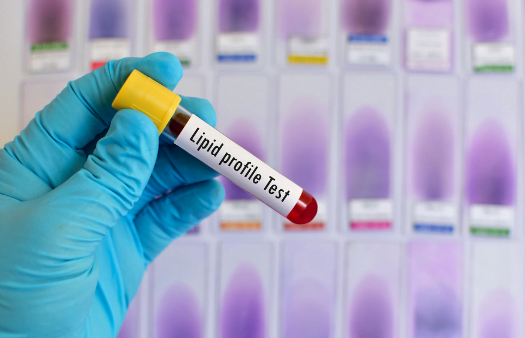HDL Function Testing in Veterinary Animal Models
High-Density Lipoprotein (HDL) function testing is a critical component of cardiovascular and lipid profile assessments, particularly within the veterinary sector. HDL plays a pivotal role in reverse cholesterol transport, helping to remove excess cholesterol from tissues and deliver it to the liver for excretion. This process is essential for maintaining overall cardiovascular health and preventing conditions such as atherosclerosis.
Understanding HDL function becomes increasingly important in veterinary medicine where genetic factors, diet, and lifestyle can significantly influence lipid profiles in animals. By evaluating HDL function, veterinarians are better equipped to tailor treatment plans and preventive strategies for their patients. This testing is not only beneficial for large companion animals like dogs and cats but also extends its utility to exotic pets and farm animals.
The methodology behind HDL function testing involves measuring the ability of HDL particles to transport cholesterol from peripheral tissues back to the liver. This process typically requires specialized equipment capable of handling small sample volumes, such as the automated lipid analyzers used in modern laboratories. The procedure also necessitates strict adherence to specimen preparation guidelines to ensure accurate and reliable results.
One of the key aspects of HDL function testing is the use of animal models that closely mimic human physiology. These models allow researchers and veterinarians to explore the impact of various factors on HDL functionality, including genetic predispositions, dietary habits, and environmental stressors. The use of appropriate animal models ensures that the results obtained are relevant and applicable to real-world scenarios.
Another crucial element in this testing process is the analysis of serum samples from animals under controlled conditions. These samples must be collected according to strict protocols outlined by international standards such as ISO 15189, which governs quality management systems for medical laboratories. The choice of animal species and strain plays a vital role, as certain genetic backgrounds may influence HDL metabolism differently.
The importance of accurate measurement cannot be overstated. To achieve this accuracy, laboratories employ advanced technologies that can differentiate between different types of HDL particles based on size, density, and functional activity. This differentiation is essential for understanding the true extent of HDL's contribution to lipid homeostasis in animal models.
Furthermore, the impact of external factors such as diet, exercise, and environmental pollutants must be considered when interpreting test results. For instance, certain diets rich in omega-3 fatty acids have been shown to enhance HDL function in both humans and animals. Conversely, exposure to high levels of trans fats can impair HDL functionality.
The role of veterinarians in this testing process is multifaceted. They must not only interpret the results accurately but also communicate them effectively to pet owners and other healthcare providers. This requires a deep understanding of both veterinary medicine and lipid metabolism, ensuring that recommendations are scientifically sound and tailored to individual patient needs.
Finally, it's important to note that HDL function testing is just one part of a comprehensive approach to cardiovascular health in veterinary practice. It should be complemented by other diagnostic tools such as echocardiograms and electrocardiograms to provide a holistic view of an animal’s cardiac health.
Industry Applications
- Veterinary Research: Understanding the impact of genetic mutations on HDL function in different breeds of dogs and cats.
- Pet Food Industry: Evaluating the effects of various dietary components on lipid profiles, focusing specifically on HDL functionality.
- Farm Animal Management: Assessing the role of HDL in preventing cardiovascular diseases among large farm animals like horses and cattle.
Quality and Reliability Assurance
The reliability of HDL function testing is paramount, especially given its significance in diagnosing and treating cardiovascular conditions. Laboratories must adhere to stringent quality assurance protocols to ensure consistent and accurate results. This includes regular calibration of equipment, participation in proficiency testing programs, and continuous staff training.
International standards such as ISO 15189 provide a framework for maintaining high-quality laboratory practices. These standards emphasize the importance of traceability, competence, and patient safety, all of which are critical when dealing with sensitive biological samples like serum from animals.
To further enhance reliability, laboratories should implement robust quality control measures such as internal audits and external reviews. Additionally, ongoing education for staff ensures they stay updated on the latest developments in HDL function testing techniques.
The use of standardized methods and reagents is also crucial. Standardization helps minimize variability between different testing sites, making it easier to compare results across various geographical locations. This standardization is particularly important when conducting large-scale studies involving multiple veterinary clinics or research institutions.
Customer Impact and Satisfaction
The impact of HDL function testing on customer satisfaction in the veterinary field can be profound. Pet owners, especially those with larger pets like dogs and cats, often express a strong desire for comprehensive health evaluations that go beyond traditional diagnostic methods. By offering HDL function testing as part of routine check-ups or specialized consultations, veterinarians demonstrate their commitment to providing top-tier care.
Pets themselves benefit from more precise diagnoses and tailored treatments. For instance, if a dog is found to have impaired HDL function due to genetic factors, the veterinarian can recommend dietary modifications that may improve this condition. This personalized approach not only enhances pet health but also fosters stronger relationships between veterinarians and their clients.
For farm animal owners, the ability to monitor HDL function in large livestock populations allows for proactive management of cardiovascular risk factors. This can lead to healthier animals with reduced incidence of heart disease, ultimately improving productivity and profitability.





